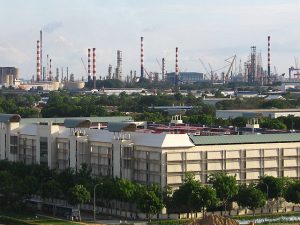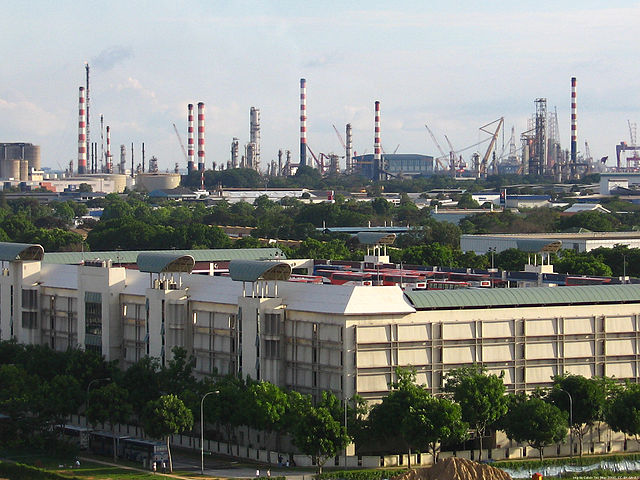 Singapore’s manufacturing activity shrank in September, the third straight month of decline after having expanded over two consecutive months. The latest Purchasing Managers’ Index (PMI) posted a reading of 48.6, which was a dip of 0.7 point from the previous month, according to the Singapore Institute of Purchasing & Materials Management.
Singapore’s manufacturing activity shrank in September, the third straight month of decline after having expanded over two consecutive months. The latest Purchasing Managers’ Index (PMI) posted a reading of 48.6, which was a dip of 0.7 point from the previous month, according to the Singapore Institute of Purchasing & Materials Management.
The contraction in the overall PMI was traced to a further decline in new orders, new export orders as well as production output. Inventory and stockholdings of finished goods continued to expand. Likewise, imports expanded further and recorded higher readings compared with the previous month.
The electronics index contracted to 48.5 in September, which was a dip of 0.5 point from the previous month. This is the third straight month of contraction after having expanded in the earlier month, said the institute. The readings indicated further decline in new orders from domestic and overseas markets and further contraction in production output and inventory. Stockholdings of finished goods and imports continued to expand and recorded higher readings.
The institute said a reading of 50 indicates that the manufacturing economy is generally expanding and that the economy is generally declining when the reading falls below 50.
August output down, too
Meanwhile, the Department of Statistics Singapore reported that overall manufacturing output declined 7% in August 2015 on a year-on-year basis for the seventh consecutive month. Excluding biomedical manufacturing, output fell 8.1%.
The latest manufacturing data came in way below the 5.3% decline forecast for August by industry watchers.
On a seasonally adjusted month-on-month basis, manufacturing output decreased 3.7% in August 2015. Excluding biomedical manufacturing, output fell 2.5%.
On a three-month moving average basis, manufacturing output contracted 5.7% in August 2015 compared to a year ago.
There were broad declines in the month across almost all factory clusters, except chemicals.
The chemicals cluster’s output increased 3.7% in August 2015 year-on-year, with the specialties, petrochemicals, and petroleum segments recording higher output. But the other chemicals segment declined 4.3% due to lower demand for plastic sheet, film & articles and glass products. Output for chemicals increased 3.7% in the first eight months of 2015 compared to the same period in 2014.
General manufacturing industries’ output declined 2% year-on-year in August 2015, with the printing segment contracting 7.8% and the miscellaneous industries falling 1.2%. This can be attributed to lower production of wearing apparels, construction-related products, and wooden furniture & fixtures. Year-to-date, sectoral output decreased 1.8% compared to the same period a year ago.
Biomedical manufacturing’s output fell 2.2% year-on-year in August 2015. The medical technology segment recorded a growth of 15.4%, boosted by higher export demand for medical devices and supplies. This was, however, offset by a 6.3% decline in pharmaceutical output. Cumulatively, biomedical manufacturing output contracted 7.8% from January to August this year compared to the same period last year.
Output of precision engineering decreased 9.2% year-on-year in 2015. Precision modules & components contracted 8.1%, with lower production of industrial rubber, wire & cable products, and fabricated metal products. A lower volume of mechanical engineering works and a drop in demand for semiconductor related equipment also led to a decline in the machinery & systems segment. Output of the precision engineering cluster fell 3% in the first eight months of 2015, compared to the same period last year.
The electronics cluster’s output contracted 10.9% in August 2015 compared to a year ago. Electronics modules & components recorded output growth on the back of expanded capacities and higher demand for components used in communication devices. The rest of the segments registered output declines. In the first eight months of this year, output for electronics decreased 3.6% compared to the same period in 2014.
The output of transport engineering fell 14.5% in August 2015 compared to a year ago. Aerospace saw output grow 20.8% on the back of more engine repair jobs and a low base last year. However, marine & offshore engineering and land transport segments declined in performance. On a year-to-date basis, output of the transport engineering cluster fell 9.8% compared to the same period a year ago.
Photo: Calvin Teo





